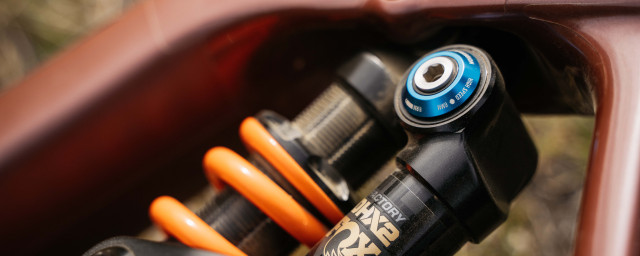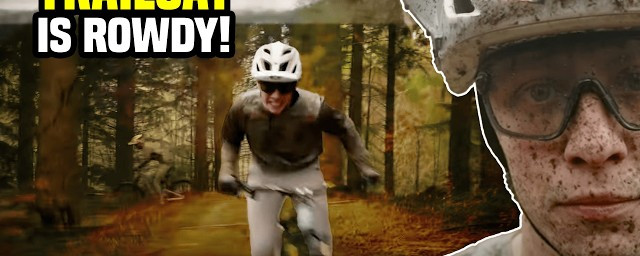Mountain Bike Icons – the Cadel Evans story

[Words by Steve Thomas / Photos courtesy of Steve Thomas, Absa Cape Epic, Road.cc]
Paris, July 2011 and a seasoned and accomplished Australian pro road bike racer stands high on the most prized podium in the world of cycling, that of the Tour de France. His name was Cadel Evans, a man who was no stranger to that perch, having already twice finished a very close second in the great race, but this time he was on the top spot and wearing the yellow jersey of the race winner. It was a historical moment in cycling terms, as he was the first-ever Australian, and only the second ever none European rider (at the time) to win the race.
- Mountain bike Icons - the greatest riders of all time
- Cross-country mountain bikes: understanding their design and geometry
- Types of mountain bikes: every MTB category explained
Cadel already had a glittering road career behind him, and yet his ride to that top spot began many years earlier when he discovered cross-country mountain biking, as he explains “Other than a BMX with training wheels at age three (which I loved) my start in cycling came via MTB. When I was 13 years old we had recently moved to a semi-rural area north of Melbourne, initially, it was for transport and independence rather than ‘cycling’. Thanks go out to a friend who encouraged me to do my first MTB rides and then eventually to enter my first local MTB race, I had discovered my calling in life.”
Humble beginnings
Born and initially raised in an aboriginal community in the Northern Territories, Cadel was named after a Welsh explorer (his grandfather was Welsh) and had humble beginnings. Those 26-inch wheels opened up a whole new world to him.
“From a mode of transportation to my passion and then soon after my profession. Mountain biking was my introduction to cycling but most of all it was the freedom of being on the bike and away from the noise that distracted me. Being such an alternative sport (at the time) was also a discovery for me; there was very little information available pre-internet and experienced riders were few and far between in Australia. My situation meant I had to learn for myself if I wanted to improve, but I had an insatiable desire to improve.”
Australia is a huge country and is far from the mainstream of mountain bike racing and funding was a hurdle Cadel had to overcome early on.
“I come from a modest background and just travelling to the national series races in Australia was a financial burden for my single mother. I was well supported by the cycling industry in Australia and now I look back, my first local bike shop helped to find my first sponsor, Apollo Bicycles - they were very generous in their help and support.”
Despite this, his talent soon shone through and began scoring him World Championship medals on- and off-road.
“Going overseas to race my first World Championships in Vail (Colorado in 1994) was a big step but thanks to my results in Australia, particularly at our first World Cup, we had Cairnsin July 1994 (Bart Brentjens’s first WC victory, if I remember right). We had support from the Australian Federation and my own sponsors. The following year the federation started the MTB national team and that allowed me to compete in some World Cups in the US and Europe. That was my big chance to show what I could do and onal teams' attention. Diamondback was the team that really wanted me and the manager at the time, Keith Ketterer had a good heart. As I was going overseas for five months at 19 years old, that (big heart) probably counted for a lot back then. I started with Diamondback in 1996, along with Scott Sharples (DH) as the first two Australians to make it professionally in MTB. While I had not felt that I had ‘made it’ - this was certainly a huge step forward in my career at a time when most thought I was crazy for even trying to make it professionally.”
Ruling the roost and hitting the hard stuff
The 1990s were a turbulent, transient, and progressive time for mountain biking, which had only just gained UCI recognition and Olympic status. And it was dominated by Europeans and yet Cadel managed to upstage them on many an occasion. He won the UCI Cross Country Mountain Bike World Cup outright in both 1998 and 1999, after which he was steered more towards the higher-profile world of road racing.
“My introduction to cycling came through mountain biking, mostly because the area where I lived was more suitable for mountain biking. Racing and training on the road came later, thanks to the advice of my first coach Damian Grundy who said one day I might want to race on the road full time back in 1993.”
New team connections led to, what was then an unprecedented move towards mixing his disciplines at a pro level.
“I later moved to the Volvo - Cannondale team, who, through Cannondale, had connections with the Saeco team. Previously I had been racing with the Australian U23 team in Italy, a small but well-organised project established by the national coach Shayne Bannan. I had the experience of racing in Italy with the generation of Ivan Basso, Danilo Di Luca, and Rinaldo Nocentini so the racing level was not such a big deal. The bridge between mountain biking and the road was a challenge though, fitting into an established team mid-season, and organising the training to fit in with the two disciplines was a challenge. At this time, only a few had come from MTB to the road; Dario Cioni was probably the first, followed by me, Lennie Kristensen and later Micheal Rasmussen and Miguel Martinez.”
The changing mix
It wasn’t until very recently, with the emergence of riders such as Tom Pidcock and Matthieu van der Poel that the traditional world of pro bike racing would permit their steeds to mix off-road racing in with their schedules and, in many cases even forbid simply riding off-road, and Cadel duly narrowed down his focus.
“I took time away from my MTB when I concentrated on the road. More for being a disciplined and dedicated athlete than any other reason, not because I didn’t enjoy riding off-road. I never lost the habit of spying good singletrack on the roadside though.”
Looking at the acceptance of mixing up disciplines in modern cycling, does he have any bad feelings?
“As cycling has changed, I wonder if it suits me more now than when I raced. The shorter more intense and technical MTB course are not my strengths, the more intense racing on the road of this era would probably suit me better. I envy the guys who have teams that now support them in both disciplines though.”
These days, for various reasons, the dirt still holds his soul.
“As time passes by and as traffic increases everywhere around the world, riding off-road and away from ‘noise’ is still what appeals to me. While I have done some MTB races since stepping away from pro racing, such as the Absa Cape Epic, and some MTB marathons in Europe. Gravel is what suits me best now.”
The heroes
“John Tomac was probably my first MTB ‘hero’ - I look back at the photos now and see how far ahead of his time he was. As a competitor, Miguel Martinez was my arch-rival, and a hard man to beat. Looking back now though, I admire Thomas Frischknecht’s consistency, Henrik Djernis’s ability to get it right on the big day and now, at 46 years old, I admire Ned Overend’s longevity more and more.”
The off-road highlights and lowlights
“My biggest MTB successes were the World Cup titles but it was probably the results I achieved at a young age that are my personal highlights. Compared to my Tour results, these wins are relatively unknown, yet for me, they were not only goals that I worked very hard to achieve but also what shaped me as a rider, and thanks to this experience they put me ahead of the game on the road.”
“As an ambitious athlete, I do of course have regrets over some punctures and mechanical problems that put me out of the running for the World Cup title and others, and especially at the World Championships and Olympics, I would have liked to have done better. But I had a great opportunity to give it everything and that experience really benefited me on the road in the later part of my career.“
Dust to dust
In 2017 Cadel made a return to mountain biking when he paired up with his former BMC road team teammate George Hincapie to ride the Absa Cape Epic, where they won their category. What were the biggest differences he noticed after such a long hiatus?
“The wheels - they were bigger! And it was my first time plugging (George Hincapie’s) a tyre. Seriously, I had to get up to speed with the right equipment choices but, otherwise, I felt that I slipped back in quite quickly back into my old environment. The course is technical and, so for us, it was more about looking after our equipment. If I may add, “Big George” was a dream to have as a partner to ride with.”
Are we likely to see more of him riding dirt in the future?
“George and I were getting ready to do Unbound Gravel before the COVID-19 pandemic changed the world’s plans, but now, with two young boys, my competition plans are on hold for a while. Hopefully, I’ll have a chance to participate (and be competitive) in some smaller gravel races soon. “
You might also like:
- Mountain Bike Icons – the Nino Schurter story
- Mountain bike Icons - the Gunn-Rita Dahle Flesjå story
- Mountain bike Icons – the Barrie Clarke story












